Fit: A Perfect Fit or a Good Enough Fit? (Including Asymmetrical Figures)
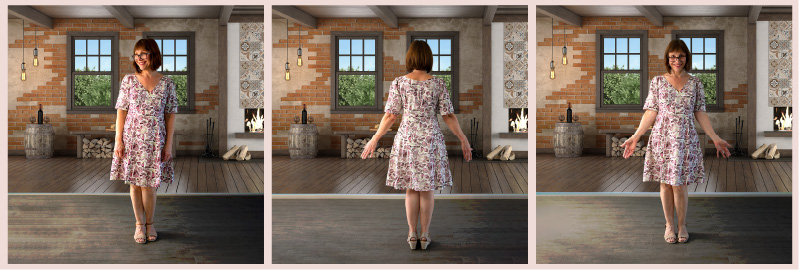
The Challenges of a 'Perfect Fit' (for women in particular)
There are a few reasons why pursuing a perfect fit can sometimes seem a fool's errand. In this article I am talking in particular about garments made of woven fabrics rather than stretch, and close fitting rather than loose or baggy clothing. It goes without saying that getting a comfortable fit with stretch is easier than with woven fabric, and that patterns with a lot of style ease are less problematic, but for those of us who like woven fabric and want to (occasionally, sometimes or often) draft close fitting garments, there are things to consider when trying to pursue that perfect and comfortable fit.
- Is is natural for weight to fluctuate. A person's weight fluctuates in the course of the day, and different people put on weight in different parts of the body. A lot of women put on a significant amount of weight around their menses. If you are inactive for a period of time due to ill health you may put on a few pounds, but then lose it when you get well.
- Different bras will make a big difference in the fit around the upper bust and therefore the fit of the armhole. Also the bust depth on the body will be different depending on the bra (e.g. push-up bras vs bras with no underwire that don't lift the breasts up, etc) and if the bust depth of the body does not match the bust depth designed for the clothing, the result will not result in a good fit.
- A garment that fits perfectly when you are standing may be really uncomfortable when you're sitting down; this 'spread' will more likely affect women who carry their weight around their hips and thighs. ( If I put a tape measure around my hips then sit down, it increases 2 inches | 5cm. Given that 2 inches ease is a standard for a straight skirt, this means either it's uncomfortable when sitting down, or I add more ease to the hips. The end result is that straight close skirts just do not work for me.)
- A garment that fits perfectly when you first try it on may be very uncomfortable if you have to stretch your arms forward or up a lot.
- Even between women fabrics, the difference on fit is huge. It may take a significant amount of time to learn how each fabric will work with your patterns.
- Some women have asymetrical figures; one side of the garment fits well, the other side doesn't. How much this matters depends on the degree of asymmetry.
- As you get older, the more problems may arise releated to age, arthritis, or other health related issues: curvature of the spine, rounded upper back, etc.
The Bottom Line...
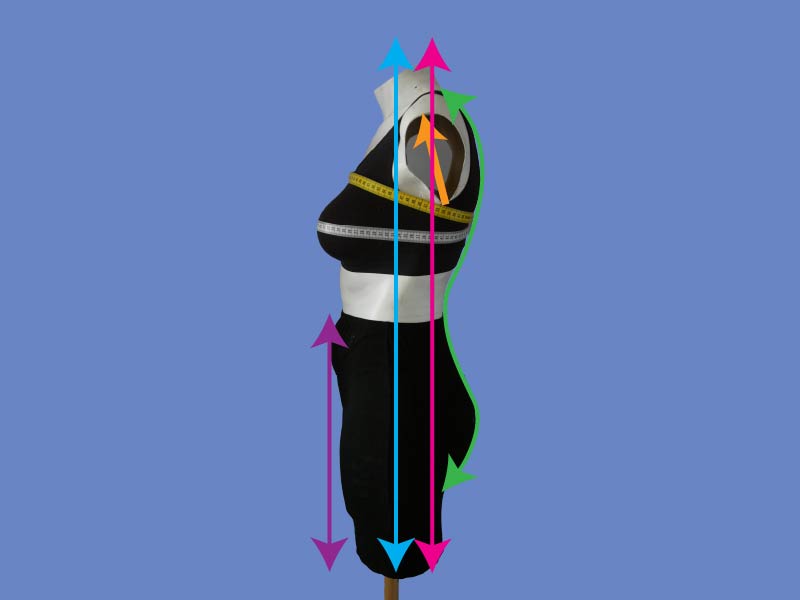
The bottom line is, unless you want to put in a lot more work, you sometimes have to choose between style and comfort, and/or settle for Good Enough Fit rather than a Perfect Fit. Some styles will just not work for your figure, and you are better off putting your effort into working with your figure than trying to achieve the impossible. (Or in some cases possible, but a good deal of extra work). This may mean avoiding close fitting garments, but it may also just mean don't expect the impossible for certain styles. (e.g. You can have a close fitting dress is Style X, but not in Style Z). Now, having said that.... I think it's sometimes a good idea to try out styles that you might have thought didn't suit you, to check out whether or not a decent fit (making it with your own block) makes a difference. Note that very asymmetric figures have certain challenges that are require either (a) acceptance of a less than perfect fit, or (b) a certain amount of work in creating full patterns (rather than half-patterns). (Or working with a half pattern then making some adjustments to one side of the pattern, which is the same thing). Of course, the more your body varies from the standard, and the more asymmetric it is, the more work is involved in getting a good fit.
The Good News
Despite the fact that your weight may fluctuate, if you have drafted blocks to fit your individual measurements, you already have a good amount of leeway for getting a good fit. If you go up and down a few pounds (or kgs), it won't make that much difference. Commercial patterns generally have a 2-inch difference between sizes; which means they are supposed to fit women with bust sizes that vary up to 2 inches. Given you are drafting your blocks to very specific measurements, they will still fit if you go up or down an inch (2.5cm) or so.
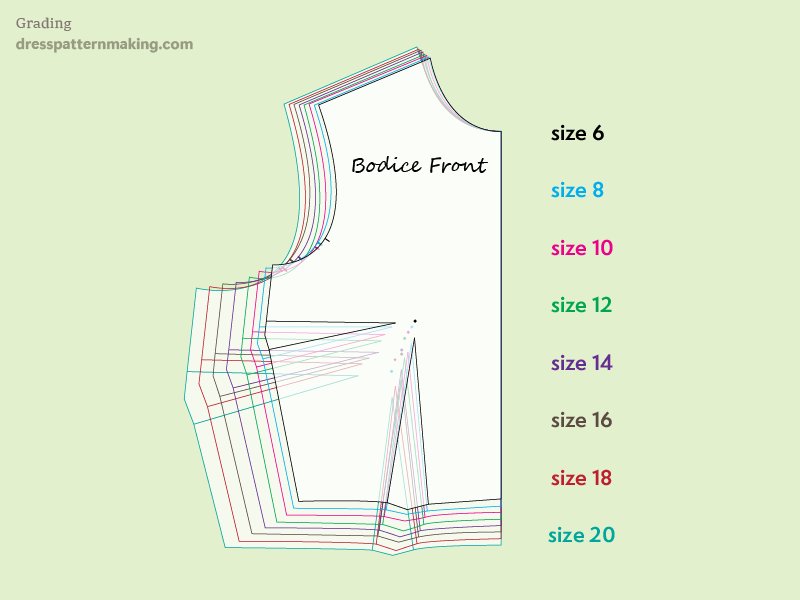
Basically going up and down a few pounds/kgs isn't going to make a big difference with your block. What does become problematic is when there is compound effect; you put on weight, you wear a different bra, your body is changing as you get older and you have rounded upper back, especially on one side, etc. Two of the most important issues for women to get a good fit are:
- Your Bra
- Creating patterns for styles that suit your figure and your figure issues
Your Bra/s
This is mainly an issue for large bra cups, but it could also be an issue for smaller bust cups if you use padded bras sometimes and un-padded bras other times. When getting a custom dress made (such as a wedding dress), it is the conventional wisdom to have the person wear the bra they will be wearing on the day, when taking measurements and doing the fit. This is not only to avoid having parts of the bra showing; it also matters for the upper bust measurement, the bust measurement, and the placement of the bust.
Bras that push your breasts up, if you have a naturally low breasts will make the most difference. The main effect it will be is that your Bust Point will be higher/lower than the garment is drafted for.
Where to draw the line: A good enough fit
On the whole, garments that I make myself fit so much better than clothing that I can buy in shops. At this moment of writing this, I am wearing a shift dress that I made myself. The style doesn't really suit me* but it fits well. It is comfortable and not constrictive. I can sit down in it without straining around my hips; though it does ride up a certain amount. If I made it so that it doesn't ride up, when I'm standing it would look like a sack. (It looks a bit shapeless as it is). The point I am trying to make; there may be some degree of trade-off between comfort and fit if you are working with woven fabrics. You may not even realize it; if you are accustomed to wearing shop purchased clothes when you have a figure quite different to the standard, you may just have gotten so used to putting up with problems that you don't realize it any more. When you draft your own patterns though, you can choose the degree to which you choose comfort over style. These are the most important lessons that I have learned:
- You'll get a better fit if you make clothing in styles that fit your figure
- You'll get a more consistent good fit if you stick to the same bra style
- Unless your body is very asymmetrical, you can get away with drafting clothes with the half-block
- Where your body is significantly asymmetrical you can work with a full-block rather than a half block (if a good fit is more important than the extra work involved)
- If you do have a significantly asymmetrical figure and you don't want to go to the trouble of working with a full-block, go for styles that disguise or draw attention away from the asymmetry
Most importantly, you need to understand the limits of what is possible with your body type and the fabric in question, balanced with your desire for a (close fitting) fit and comfort. * The reason I made a dress in a style that doesn't suit me was to check that it didn't suit me, and it wasn't just due to poor fit.
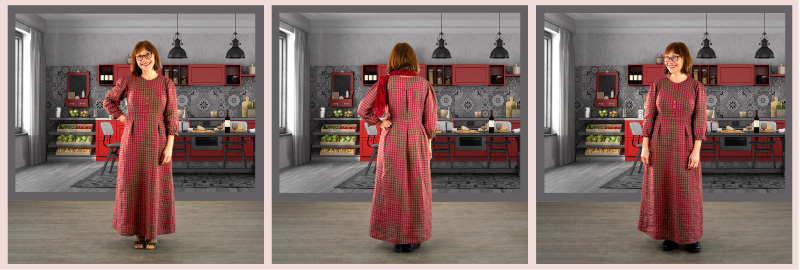
Asymmetrical Figures
It is standard practice to draft patterns on a half-block; most commercial patterns that are made for the home sewer have pattern pieces that are cut on the fold. (Note that with production patterns for the garment industry, this is not the case; all final pattern pieces are full pattern pieces. The pattern is usually drafted from the half-block, then when the design is finished, it is flipped over and traced for the full pattern. In production the pattern is put on many layers of fabric to cut multiple copies at once; it cannot be cut on the fold). If one side of your body is very different to the other, you would be better off drafting a full pattern piece, and making the necessary changes to each side. The way you would do this is:
- Draft the half-block as per the standard instructions
- Flip it over and trace it to make a full block
- Make a toile and mark the adjustments on either/both sides
- Transfer those adjustments to the block on the relevant side/s (left/right)
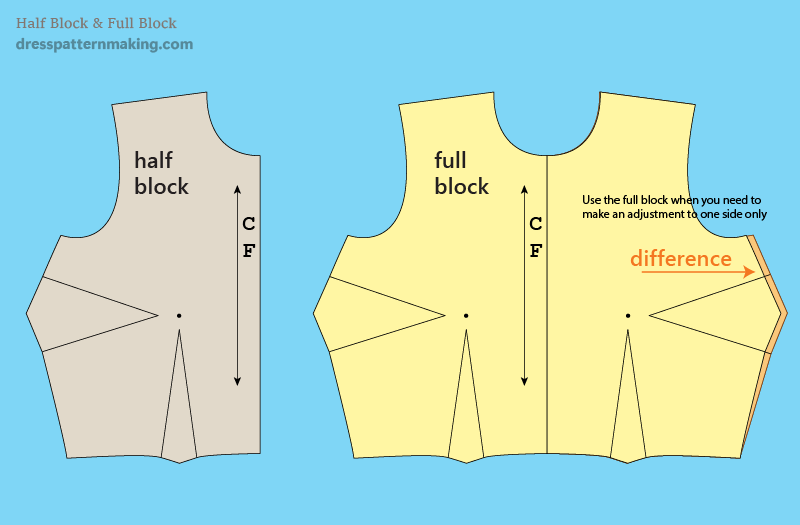
When drafting your patterns, use your full block instead of the half-block. You will not be able to cut these pattern pieces on the fold. The other option is to work with the half block, then when the pattern is finished, trace the half pattern to the other side so you have a full pattern, then make adjustments to one side. Either way it's the same work involved. You may have to only make adjustments to only the Front or Back, and work with the half pattern for the other. Or you may have to make adjustments to both front and back (e.g. one high hip).
Example
I have one breast that is at least one full cup size larger than the other. It could make sense for me to draft a full asymmetric block; i.e. extra width and a bigger dart on the bigger side. Let me point out, firstly, that I don't think that it's that obvious to anyone else that one breast is significantly larger than the other, as people don't usually stare at my breasts. Some people may then ask one or more of the following questions:
- If it's not noticeable, why do anything about it?
- If you draft the pattern/garment so one side is different to the other, wouldn't you make the difference more noticeable? (Don't you want to hide the difference rather than accentuate it?).
- Why not just pad out the bra of the smaller side?
Padding the bra cup of the smaller side?
That is just not an option for me. I don't like any kind of padding on my bra, and ... .no. I don't really know where to start with that, but just... no!.
Why do anything if it's not that noticeable? And won't drafting different dart sizes make the problem more noticeable?
The issue is not that my breast LOOK different sizes, the issue is that there is a lot of extra ease in the armhole of the smaller breast, and I get significant gaping with sleeveless garments. Also, when I lower the neckline, if I take out the same size gape dart (as symmetrical adjustment) on both the left and right side of the CF ; it either is too fitted on the left (if I take the measurement from the right), or gapes on the right (if I take the gape dart measurement from the left). (Yes, I could split the difference, but that's not ideal either.) So the reason to make this adjustment is to make the garment fit better. It will look better if it fits better. However, let me go back a step and say; this issue (one breast larger than the other) is more obvious with sleeveless garments, and lower necklines. I could choose not to draft/wear sleeveless garments, not wear lower necklines, or just make a lower neckline asymmetric adjustment... This goes back to (1) how important it is to me to wear sleeveless garments. (I love sleeveless tops, I wear them all the time, I wear them in winter with layers on top. Although I am post-menopausal, I have hot flushes all the time and love the comfort of sleeveless tops.) And (2) how important a good fit is (I could just put up with the gaping). I could decide to make sleeveless tops in slightly different styles which will hide the gaping. I can put up with the gaping for casual garment, but I can go to the trouble of making adjustments for garments for special occasions. adjustments for the asymmetry and put in the extra work. Some other examples of asymmetry that might require adjustments are:
- one high hip
- curvature of the back/shoulder due to arthritis that is more pronounced on one shoulder
- significant difference between the right and left bicep or upper arm measurements

